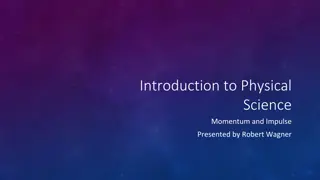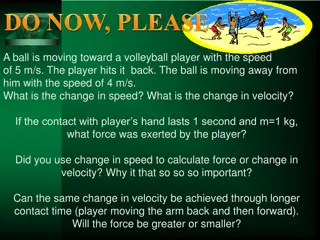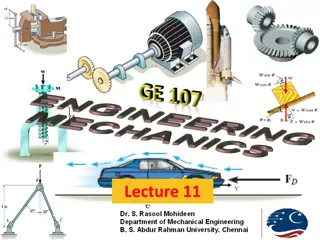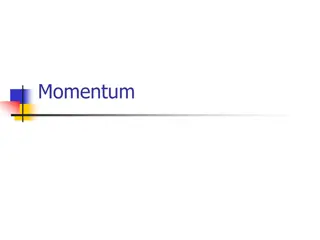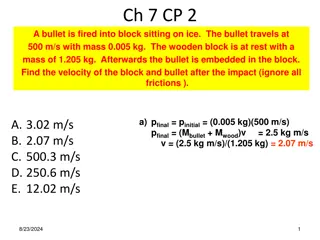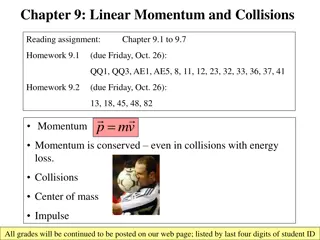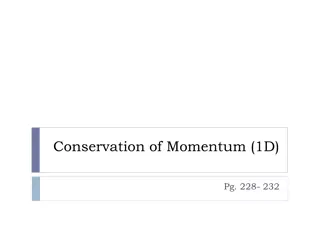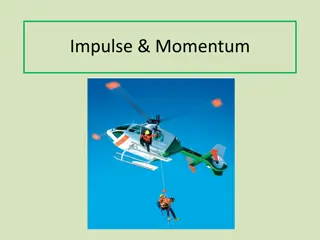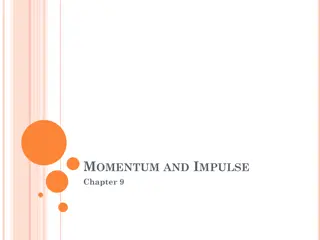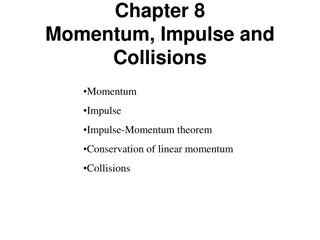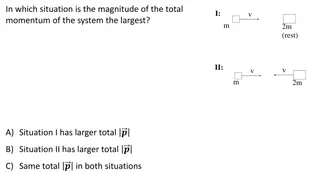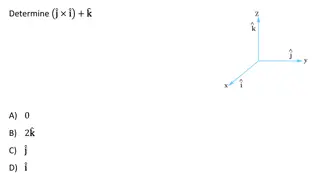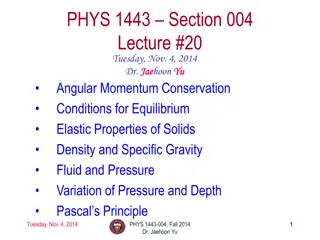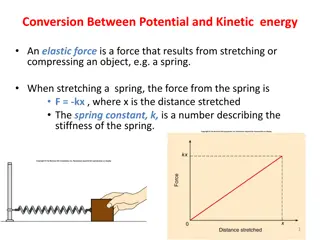Understanding Impulse and Momentum in Physics
Impulse, defined as the force times the time over which it acts, is crucial in changing an object's momentum. Various scenarios such as golf impact, billiard ball collisions, and skateboard acceleration are explored to demonstrate the importance of force, time, and impulse in physics concepts. Learn about calculating impulse, impact force, and momentum changes in different situations.
Download Presentation

Please find below an Image/Link to download the presentation.
The content on the website is provided AS IS for your information and personal use only. It may not be sold, licensed, or shared on other websites without obtaining consent from the author. Download presentation by click this link. If you encounter any issues during the download, it is possible that the publisher has removed the file from their server.
E N D
Presentation Transcript
F = p/t p = Ft Impulse is defined as the force times the time over which the force acts Impulse = Ft = p In order to change the momentum of an object, two quantities are important (Force and time)
Golf to impart the greatest momentum to a ball, its not only the force you hit the ball with but also how long you re in contact that matters Why use a seat belt?
Area under a force vs. time curve is impulse which is equal to the change in momentum
Assuming a 65g tennis ball started from rest and the force of impact of the racket on the ball is represented below, what is the impulse acting on the ball and its final speed?
A billiard ball of mass 200g rolls towards the right-hand cushion of a billiard ball table at 2.0 m/s and rebounds straight back at 2.0m/s. A) What impulse acts on the ball? B) If the time of interaction is 2.0s, what force acts on this ball?
A 2.0 kg skateboard is rolling across a smooth floor when a girl kicks it causing it to speed up to 4.5m/s in .50s. If she exerts a force of 6.0N while kicking, what was it s initial velocity?
A) Calculate the impulse experienced when a 70kg person lands on firm ground after jumping from a height of 3.0m. B) If it takes .003 s to stop when landing straight legged, what is the force of impact? C) If it takes .13s to land when your knees are bent, what is the force of impact?


